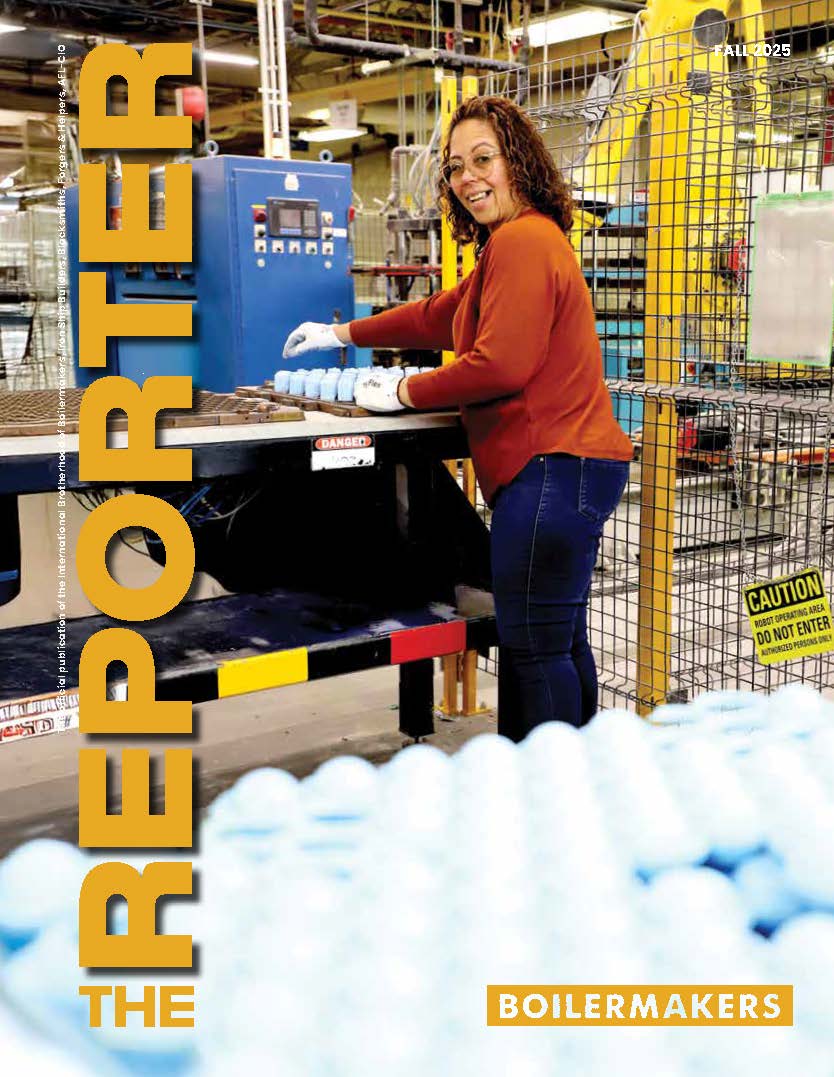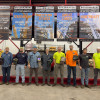The company also highlights production improvements at Groton, Conn., and Quonset Point that will allow it to deliver the submarine a year ahead of schedule.
GROTON, CONN. — Shipbuilder Electric Boat yesterday [Aug. 7] showed off its latest handiwork — the completed hull of a Virginia-class submarine now under construction at the shipyard on the Thames River.
Electric Boat gave the media a peek at the submarine as congressional leaders debate the future pace of spending on behemoths like the 377-foot-long New Hampshire, which cost $2.5 billion to build.
On Sunday [Aug. 5], the U.S. House of Representatives overwhelmingly approved a $460-billion defense spending plan that includes $588 million to speed production of Virginia-class nuclear submarines, such as the New Hampshire, from one annually to two per year.
The plan must now go to the Senate, which is expected to take up the measure next month.
On a bright, humid day dedicated to giving EB workers a pat on the back, executives talked about the investments that parent company General Dynamics is making to cut the cost and delivery time for the new submarines.
“We’ve known for some time New Hampshire was going to be a significant ship,” said John Casey, Electric Boat’s president.
He ticked off investments at the facility in Groton and at Quonset Point in North Kingstown, where submarine hull sections are made and then taken by barge to Groton for assembly. Among those was $9.4 million spent at Quonset Point to speed hull-coating applications.
The company also was able to reduce the number of hull sections needed to build a submarine, from 10 to four, because workers can now handle sections weighing 2,000 tons instead of the previous cap of 1,600 tons.
The changes will allow Electric Boat to deliver the New Hampshire, the fifth Virginia-class submarine, a year ahead of schedule, Casey said. The submarine will be complete by the end of next year.
As Casey talked, thousands of hard-hatted workers filed past the New Hampshire as it sat on metal cribbing in Building 260 on their way to pick up the box lunches that were part of the day’s events.
On hand for yesterday’s [Aug. 7] event was Ken Delacruz, president of the Metal Trades Council AFL-CIO labor group that represents many of those workers. [Delacruz is also a member of Boilermakers Local 614 of New London, Conn.]
The faster work schedule would stabilize the submarine construction work force, Delacruz said. In the 1990s, the Metal Trades Council represented more than 8,000 workers in the region, he said. Now, it represents fewer than 4,000.
He described Electric Boat as in “survival mode.”
“We have to have some other work,” Delacruz said.
About 7,500 people work at General Dynamics’ Electric Boat shipyard in Groton, while about 2,000 work at the company’s Quonset Point facility.
Since the mid-1990s, Electric Boat has collaborated with Northrop Grumman Newport News on the production of Virginia-class submarines. The two companies have lobbied to boost the shared workload.
Rhode Island and Connecticut elected officials have said the accelerated schedule would boost Electric Boat, which has struggled to maintain employment.
It’s a matter that Casey emphasized yesterday [Aug. 7].
“We have a challenge coming over the next several years to sustain our waterfront employment levels,” he said amid the reverberating din of the metal-shed building housing the New Hampshire.
The higher production rate would also begin to reverse the dwindling size of the submarine fleet, a restoration the Navy has sought for years.
Congress has been moving to accelerate some large weapons systems, despite concerns among military leaders about the difficulty of sustaining spending.
But Navy Secretary Donald C. Winter is on record saying that the Navy doesn’t want to raise the Virginia production rate earlier than 2012.
“We don’t want to go to two a year” earlier than 2012 only to later find it necessary “to go back to one,” Winter told the Senate Armed Services Committee earlier this year.
Editor’s note: On Nov. 13, Pres. Bush signed the 2008 Defense Appropriations bill, which includes $588 million in additional funds intended to help double sub construction to two a year by as early as 2010.






